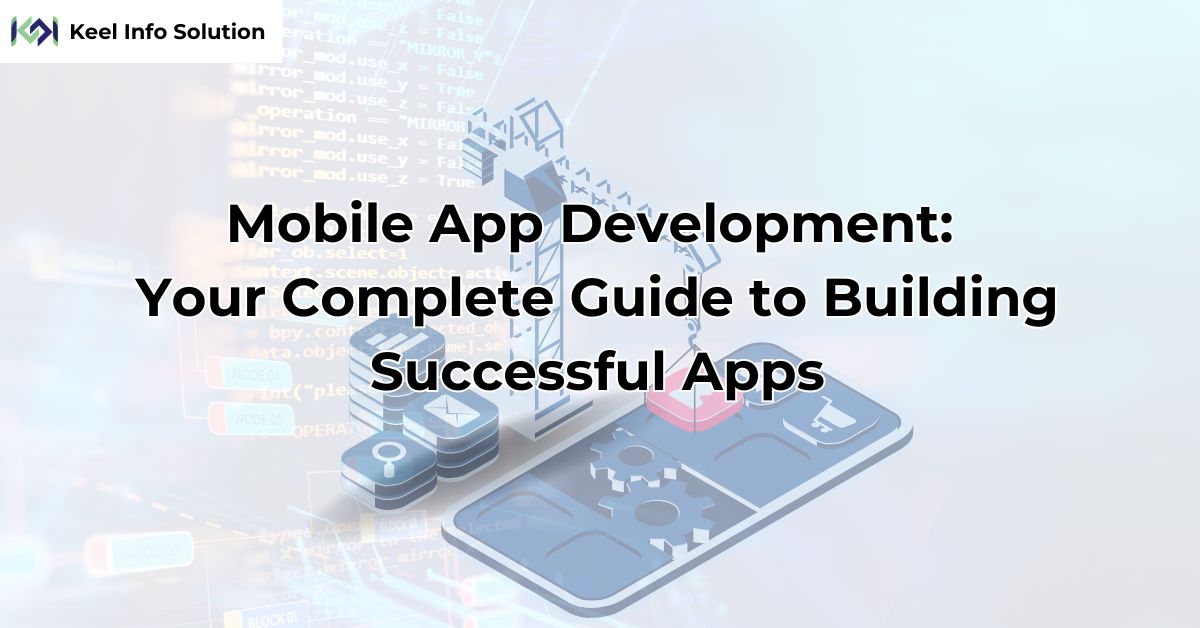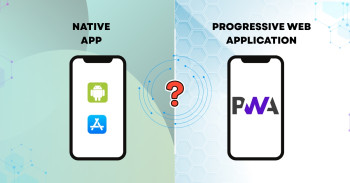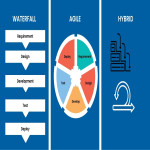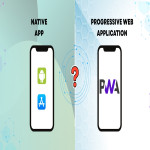In today’s digital world, mobile apps are a vital
touchpoint between businesses and consumers, serving millions of users every
day. From social media and shopping to banking and productivity, mobile apps
power much of our daily interactions with technology. For businesses,
developing a mobile app can open new opportunities to reach customers,
streamline operations, and enhance brand engagement. However, successful mobile
app development involves strategic planning, technical expertise, and a clear
understanding of market demands. This guide will walk you through the key
stages of mobile app development, best practices, and trends to keep in mind
for creating a successful app.
Why Mobile App Development Matters
The demand for mobile apps has skyrocketed, with
users spending hours daily on their mobile devices. In 2023, smartphone users
numbered over 6 billion globally, and this number continues to grow. For
businesses, a mobile app represents a unique channel to engage with their
audience directly, offering personalized experiences and gathering valuable
data to refine services and offerings. Moreover, mobile apps allow businesses
to foster customer loyalty, streamline customer service, and generate new
revenue streams through in-app purchases or ads.
Types of Mobile Apps
Before diving into development, it’s essential to
understand the types of mobile apps available and choose the one that aligns
with your goals and target audience.
Native Apps: Built specifically for a particular platform,
such as iOS or Android, native apps offer excellent performance and a seamless
user experience. They leverage platform-specific languages—Swift or Objective-C
for iOS and Java or Kotlin for Android—and are best suited for apps requiring
high performance, like gaming or AR apps.
Cross-Platform Apps: Developed using frameworks like Flutter or React
Native, these apps are built once and can run on multiple platforms.
Cross-platform apps are more cost-effective and reduce development time, making
them ideal for businesses targeting both iOS and Android users.
Progressive Web Apps (PWAs): These web-based apps
function like a website but offer an app-like experience. PWAs can be accessed
from a browser, don’t require downloads, and work across all devices. They’re
great for businesses on a budget or those looking to reach users with minimal
friction.
Key Stages in Mobile App Development
Creating a mobile app is a complex process that
requires careful planning, design, and testing. Here’s an overview of the main
stages involved:
1. Idea and Conceptualization
The foundation of a successful app begins with a
clear idea that addresses a specific need or solves a problem for your target
audience. During this stage, you should:
Define the app’s purpose and target audience.
Identify key features that will differentiate
your app from competitors.
Conduct market research to understand user
preferences, pain points, and competitor apps.
A well-defined concept not only provides
direction but also lays the groundwork for effective marketing and user acquisition
later on.
2. App Design and UX/UI Planning
A good user experience is crucial to an app’s
success. During the design phase, you should focus on creating intuitive and
visually appealing interfaces. The UX (User Experience) design defines how users
interact with your app, while the UI (User Interface) focuses on aesthetics.
Wireframing: Begin by creating wireframes—skeletal frameworks
of the app that map out its functionality and navigation.
Prototyping: Develop clickable prototypes to simulate how
users will interact with the app. Prototyping helps identify potential
usability issues early.
UI Design: Choose colors, typography, icons, and layouts
that reflect your brand and resonate with users. Aim for a clean and responsive
design to enhance usability.
3. Choosing a Tech Stack
The tech stack refers to the combination of
programming languages, tools, and frameworks used to develop the app. Your
choice of tech stack will depend on whether you’re building a native,
cross-platform, or web app. Some popular options include:
Native Development: Swift (iOS), Java/Kotlin (Android)
Cross-Platform: Flutter, React Native
Backend: Node.js, Django, or Ruby on Rails for
server-side development, and MySQL or MongoDB for databases.
Selecting the right tech stack is critical for
ensuring your app’s performance, scalability, and compatibility with devices.
4. Development and Coding
With designs finalized and a tech stack chosen,
it’s time to start coding. Mobile app development typically consists of three
main components:
Frontend Development: This is the client-side or user-facing part of
the app, where users interact with buttons, forms, and navigation. Frontend
developers work closely with UI designers to bring the app’s visual elements to
life.
Backend Development: This involves building the server, database, and
APIs that enable the app to function. The backend handles tasks like data
storage, user authentication, and real-time notifications.
APIs (Application Programming Interfaces): APIs connect the frontend
and backend, allowing data to flow seamlessly between the app’s server and user
interface. Many apps also use third-party APIs for features like maps, social
logins, or payment processing.
5. Testing and Quality Assurance
Testing is a vital step in ensuring that your app
is reliable, secure, and offers a positive user experience. There are several
types of testing to perform:
Functional Testing: Ensures that the app’s features work as
intended.
Usability Testing: Assesses the app’s user-friendliness.
Performance Testing: Verifies that the app performs well under various
conditions, including high traffic.
Security Testing: Checks for vulnerabilities, data protection, and
compliance with security standards.
Regular testing at each stage of development,
known as “iterative testing,” allows developers to fix bugs and optimize the
app before launch.
6. Deployment and Launch
Once testing is complete and you’re satisfied
with the app’s performance, it’s time to deploy it to app stores. Each platform
has its own review process:
iOS: Submit your app to the Apple App Store. The review can take up to a week,
and Apple checks for quality, performance, and compliance with App Store
guidelines.
Android: Submit your app to Google Play. The review
process is typically faster, taking only a few hours.
Make sure to optimize your app’s listing with
relevant keywords, a catchy title, and appealing screenshots to attract
downloads.
Post-Launch: Maintenance and Updates
App development doesn’t end at launch. To retain
users and stay competitive, it’s essential to update your app regularly based
on user feedback and market trends. Regular updates improve functionality, fix
bugs, and enhance security. Additionally, analytics tools can provide valuable
insights into user behavior, helping you refine the app and add new features as
needed.
Trends in Mobile App Development
Staying updated on trends can give your app a
competitive edge. Here are some of the current trends in mobile app
development:
AI and Machine Learning: AI enhances personalization,
enabling features like predictive search, chatbots, and recommendation engines.
5G Technology: Faster speeds and lower latency with 5G improve
app performance, especially for streaming, AR, and IoT-based applications.
Augmented Reality (AR): AR adds interactive elements, making it popular
for apps in retail, education, and gaming.
Wearable Device Integration: With smartwatches and
fitness trackers becoming mainstream, apps with wearable compatibility can
offer users a more holistic experience.
Blockchain: Blockchain enhances security, especially for apps
that handle transactions, making it useful for finance and e-commerce apps.
Conclusion
Developing a mobile app is a strategic investment
that can offer immense rewards for businesses, enabling deeper customer
engagement, data-driven insights, and new revenue channels. While the
development process may seem daunting, a structured approach—from idea
validation to post-launch updates—can make it manageable and rewarding.
By following best practices, choosing the right
development type, and staying abreast of trends, you can create a mobile app
that stands out in today’s competitive market. For businesses looking to
enhance their digital presence and provide a seamless, user-friendly
experience, mobile app development is more than just an option—it’s an
essential step toward achieving long-term success.











